American Beauty
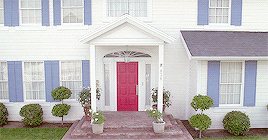 | 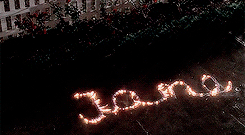 | 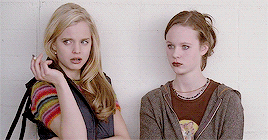 |
|---|---|---|
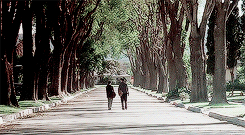 | 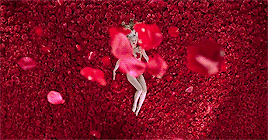 | 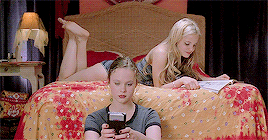 |
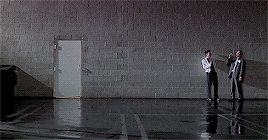 | 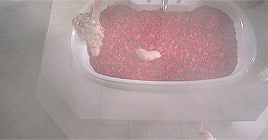 | 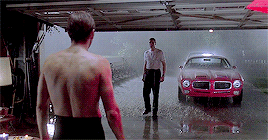 |
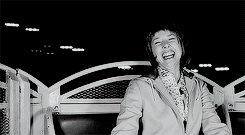 | 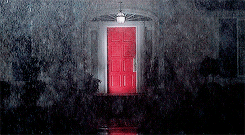 | 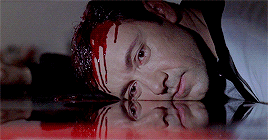 |
American Beauty (1999) is one of my favourite films due to the alternative use of enigma codes, symbolism, camera angles and the idea of challenging the 'typical' American family.
The film looks into many different themes that challenge the nature of society. The main themes that the production exaggerates are that of materialism, appearance versus reality, denial and repression, control versus chaos, loneliness versus feeling connected, change and searching, and versions of beauty.
The Art Culture Film website describes the family portrayed in the openng sequence as "trapped by the ideology of the American Dream". The use of high angled shots portray Lester as a weak character, submissive to his wife Caroline. As the film progresses, Lecester changes his life, quitting his job, becoming in control of the family unit and ultimately becoming in control of his life. During this transformation, shots become low-angled to show power, and he is seen to become centralised in the framing; connoting dominance and superiority over the other characters.
The film uses visuals and dialogue throughout to portray the changes of Lecester's life. The use of the colour Red is dominant throughout the whole film. The colour connotes Lust, Love, Passion, Danger and sometimes even Evil. At the beginning of the movie, Caroline (the hero's wife), is seen to be cutting red roses. I think that this symbolises the lack of passion and sexual drive in their relationship; as when Lester starts to fantasise over his Daughter's friend Angela, red rose petals seem to shroud his fantasies of her; suggesting that his wife is being replaced. This drive seems to become the 'fuse' for the downwards spiral of events that occurs afterwards; which is when the colour red starts to dominate the film's aesthetics (seen by the gifs above). This is then juxtaposed when red roses appear by Lester's head after he is murdered. This signifies the colour red as a sense of passion, but also danger; symbolising the bad effects of obsession and lust.
Red is also used to build up suspense and tension in the film, especially towards the end as we as an audience are left to guess who the killer is, before the revelation. Each supporting character in the aftermath of Lester’s death is wearing or near something that is red. I feel as if this could suggest that the amount of red shown in each shot manipulates the reader in to guessing who the murderer’s identity is, as it's slowly revealed.
For example, Angela puts on red lipstick in the bathroom when the shot goes off. Ricky and Jane are lying on red-colored bed sheets. Carolyn is wearing a red dress – and holding a gun – which leads us to believe it may be her. Then finally, the ending scene, we see Colonel Fitts splattered with the blood and holding the murder weapon.
Camera shots through windows, doors and trees suggest the character's are entrapped in a 'jail-like' surrounding; symbolising thatthere is no escape from the events that occur throughout the film. Tracking shots of each character's reaction to the gunshot at the end of the movie creates a sense of realism and also makes it easier for the reader to follow the plot and understand what is happening. Fast-paced editing is used and extreme close-up's of character's expressions are frequent to show the emotion and deteriorating mental state of each character; which is effective and I think I should use in my production.
Music and sound play a key part in this movie.
The use of reader foreknowledge by the opening voice-over narrative establishes the mystery of that Lester is going to die. This makes the reader become intrigued and builds tension for the upcoming events in the movie. It creates a question that dominates the ideas of the film, the question looms over us with every new scene we read. The fact that the film is opened with the ideas of death and romance makes it compelling and effectively interests the reader to watch the film. This voice-over is then carried on at the end of the moive, making it a book-end of what was first established; whilst also fnalising the film.
The soundtrack used is a light-hearted, 'elevator-music' sounding piece, that becomes louder as the film progresses. I feel as though this is effective as it seems to juxapose the dramatic themes that progress in the film, becoming ironic. It also seems to foresee the upcoming event of Lester's death as it sounds funeral-like, and becomes more frequently used towards the end of the film. This domination and significance of the sountrack is effective and alternative ,and I feel as though this could be used in my piece.